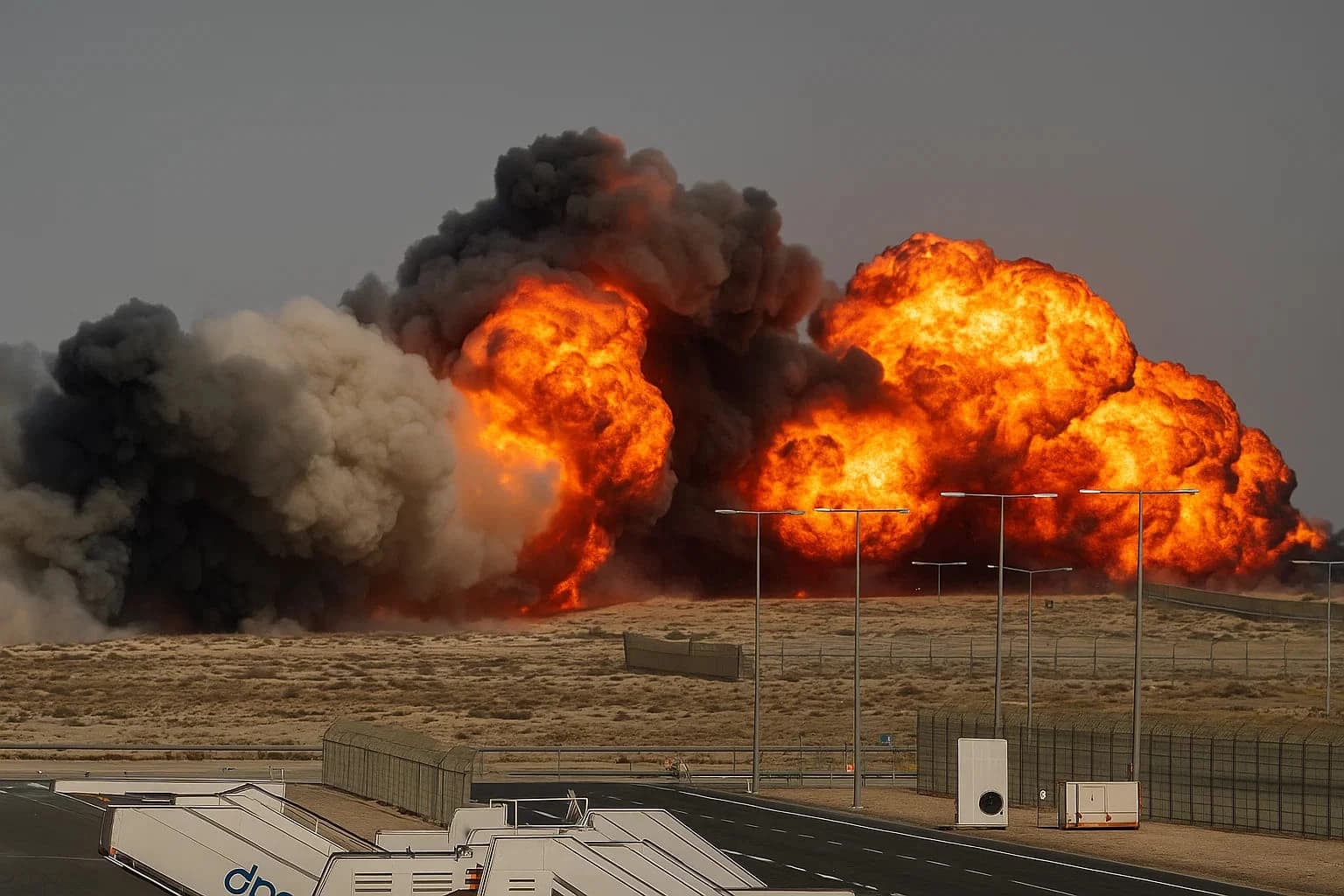© 2025 Roz UpdatesbyTETRA SEVEN

* All product/brand names, logos, and trademarks are property of their respective owners.
In a world increasingly influenced by artificial intelligence, the line between real and fabricated has never been blurrier. By 2025, deepfakes and AI-generated hoaxes have evolved into highly sophisticated tools used to deceive, mislead, and manipulate public perception. These digital forgeries—created using advanced machine learning algorithms—can produce eerily realistic videos, audio clips, and even news articles that appear legitimate at first glance. What started as a novelty has become a serious threat to information integrity.
Fake news isn’t new, but the fusion of deep learning and content creation has dramatically changed the game. No longer are misinformation campaigns limited to poorly written posts or obvious fabrications. Today’s deepfake scams are capable of mimicking real people with shocking accuracy, including politicians, celebrities, and even loved ones. This makes the detection and prevention of such content not just a technical challenge but a societal imperative.
As Pakistan and the rest of the world grapple with a tidal wave of AI-generated disinformation, the need to outsmart fake news has never been more urgent. Whether it’s a viral video spreading political lies or an AI hoax that incites panic, the implications are vast—from undermining elections to destabilizing communities.
But there is hope. Alongside these threats are emerging technologies and strategies designed to combat them. With the right knowledge and tools, individuals can learn to recognize the signs of manipulation and protect themselves from falling victim to digital deception. This blog will explore what deepfakes and AI hoaxes really are, how to identify them, the impact they have—particularly in Pakistan—and how we can equip ourselves to stay informed and resilient in the age of synthetic media.
In the digital age, not everything you see—or hear—can be trusted. Deepfakes and AI hoaxes represent some of the most deceptive uses of artificial intelligence in 2025, blending realism with manipulation in ways that are both astonishing and alarming.
Deepfakes are synthetic media, typically videos or audio, generated by AI algorithms such as generative adversarial networks (GANs). These tools are trained on massive datasets to mimic the voice, face, and movements of real individuals. By using techniques like facial mapping and voice cloning, deepfake creators can make it seem like someone is saying or doing something they never actually did.
Originally developed for entertainment and satire, deepfakes have rapidly evolved into tools for malicious activity—ranging from identity theft and blackmail to political propaganda and corporate sabotage. What sets them apart is their growing realism. In 2025, deepfakes are nearly indistinguishable from authentic media, making traditional detection methods less effective.
AI hoaxes encompass more than just videos. They include text-based fake news articles generated by large language models, manipulated audio recordings, and fabricated images. These can be used in scams, misinformation campaigns, or even to spark geopolitical conflict.
For instance, in Pakistan, there have been recent cases where AI-generated videos were used to impersonate public officials, spreading misinformation about national policies. Globally, deepfakes have been used to simulate military leaders issuing false commands, and to create fabricated speeches attributed to world leaders—causing public panic and confusion.
As AI becomes more accessible, the barriers to creating convincing hoaxes diminish. Recognizing the nature and scope of these threats is the first step toward combating them. By understanding how deepfakes and AI hoaxes are made and what forms they take, individuals can begin to develop the digital literacy needed to critically assess the content they encounter.
With the rapid rise of AI-generated misinformation, detecting and debunking fake news has become a vital skill in 2025. Whether you're scrolling through social media, reading a blog, or watching a video, being able to spot deception is your first line of defense against digital manipulation.
Modern problems require modern solutions. Fortunately, several advanced deepfake detection tools have been developed to help users verify the authenticity of media. Platforms like Deepware Scanner, Reality Defender, and Microsoft’s Video Authenticator use AI to analyze facial inconsistencies, lighting mismatches, and data anomalies in videos and images.
For the average user, browser plugins such as InVID or Fake News Detector can assist in validating media with reverse image search and metadata analysis. Some Pakistani media outlets have even begun to integrate these tools into their news verification processes to fight the wave of AI hoaxes targeting regional audiences.
While tools are helpful, human judgment still plays a critical role. When evaluating a suspicious piece of content, ask the following:
Look closely at unnatural blinking, inconsistent shadows, mismatched lip-syncing, or odd intonations in voice recordings—common giveaways in deepfakes. In written articles, watch for overly generic language or factual inconsistencies that suggest AI-generated text.
In Pakistan, public awareness campaigns have started educating citizens on how to identify such red flags, especially in the wake of politically motivated deepfake incidents that briefly went viral on platforms like WhatsApp and TikTok.
Combining digital tools with critical thinking offers the most effective way to outsmart fake news. By staying skeptical, informed, and tech-savvy, individuals can protect themselves—and others—from falling into the trap of AI-generated misinformation.
The surge of deepfakes and AI-generated hoaxes is more than just a technological issue—it’s a societal crisis. In 2025, the effects of misinformation are felt across political systems, mental health, public trust, and cultural stability. While the global community scrambles to address these dangers, countries like Pakistan face unique challenges and are developing their own strategies for resilience.
Fake news, particularly when crafted with the sophistication of deepfakes, erodes the public’s trust in institutions, media, and even personal relationships. Imagine seeing a video of a trusted leader saying something inflammatory—only to later discover it was a fabrication. The psychological impact includes confusion, anxiety, and polarization.
Studies show that exposure to AI-generated misinformation can increase belief in conspiracy theories and reduce one's ability to distinguish truth from falsehood. This blurring of reality contributes to societal fragmentation, where individuals only trust content that aligns with their pre-existing beliefs.
In Pakistan, the effect is compounded by limited digital literacy in rural areas, where fake news spreads rapidly via platforms like WhatsApp, often sparking real-world consequences such as mob violence or social unrest.
Pakistan has witnessed several high-profile incidents involving deepfakes or AI hoaxes. One notable case involved a manipulated video of a political figure that spread misinformation during a heated election season. Another viral hoax circulated false warnings about public health threats, leading to panic in local communities.
In response, the Pakistani government has begun rolling out initiatives to educate the public and implement legal frameworks for content verification. The Pakistan Telecommunication Authority (PTA) has partnered with tech firms to promote media verification tools and launched public awareness campaigns about digital misinformation.
Educational programs in urban schools now include modules on fake news detection, and journalists are receiving training in AI content verification, signaling a shift toward proactive countermeasures.
By acknowledging the deep societal impact of AI-generated hoaxes and investing in digital resilience, Pakistan is taking meaningful steps to fight the tide of fake news. But ongoing vigilance, education, and collaboration are essential to protect the public and preserve truth in the information age.
As artificial intelligence continues to evolve, so too does its potential to disrupt how we access and interpret information. By 2025, AI-generated content has reached a tipping point, raising new questions about the future of trust, media, and conflict. The next frontier isn’t just about creating synthetic content—it’s about controlling the narrative in what many now call “information warfare.”
Deepfakes will become more sophisticated and easier to produce, thanks to open-source tools and more powerful computing resources. With the ability to create realistic audio, video, and even entire personas, bad actors can orchestrate large-scale disinformation campaigns with unprecedented precision.
AI-generated fake news will not only mimic individuals but also institutions, with fabricated statements from governments, corporations, and NGOs potentially swaying public opinion or market behavior. Expect deepfakes to be used not just in political manipulation, but in financial fraud, corporate espionage, and even cyberterrorism.
On the defensive front, AI is also being trained to detect deepfakes faster and more accurately. New detection frameworks will integrate into social media platforms, browsers, and even operating systems, flagging synthetic content in real time.
Governments around the world, including Pakistan, are beginning to understand the urgency of addressing AI-generated misinformation. Some countries are enacting laws that criminalize the malicious use of deepfakes, while others are forming international coalitions to create ethical AI standards.
Pakistan is in the early stages of developing legislation around digital identity protection and content authenticity. Tech regulators are working with AI experts and media watchdogs to ensure that users are informed when content has been AI-generated or altered.
Education remains the cornerstone of a resilient society. Embedding digital literacy into curricula, training journalists and educators, and encouraging critical thinking at all levels of society will be essential. As the AI arms race intensifies, the ability to discern truth from fiction may become one of the most important life skills of the 21st century.
The threat of deepfakes and AI-generated hoaxes is no longer speculative—it’s a pressing reality that is shaping how societies function and how individuals interact with the world around them. As we’ve explored throughout this blog, 2025 marks a critical turning point. The tools for digital deception are more powerful and more accessible than ever before, posing risks not only to individuals and institutions but to the very fabric of truth in our daily lives.
We’ve seen how deepfakes are created, how they’ve been used to spread disinformation globally and locally, and how their impacts—psychological, social, and political—can be devastating. Yet, amid the danger lies opportunity. Technology has given us not only the problems, but also the solutions. Detection tools are advancing, awareness is growing, and countries like Pakistan are taking meaningful steps to counter these threats through regulation, education, and innovation.
The key takeaway? Vigilance. In a time when seeing is no longer believing, skepticism is not cynicism—it’s survival. Individuals must arm themselves with knowledge, question content before accepting it as fact, and advocate for stronger digital literacy initiatives in their communities.
Whether you're a student, a journalist, a policymaker, or just a curious citizen, your role in fighting misinformation is vital. Let this be a call to action: don’t just consume content—challenge it. Help build a world where truth can stand strong against even the most convincing lies.

22 November 2025

18 November 2025
No comments yet. Be the first to comment!